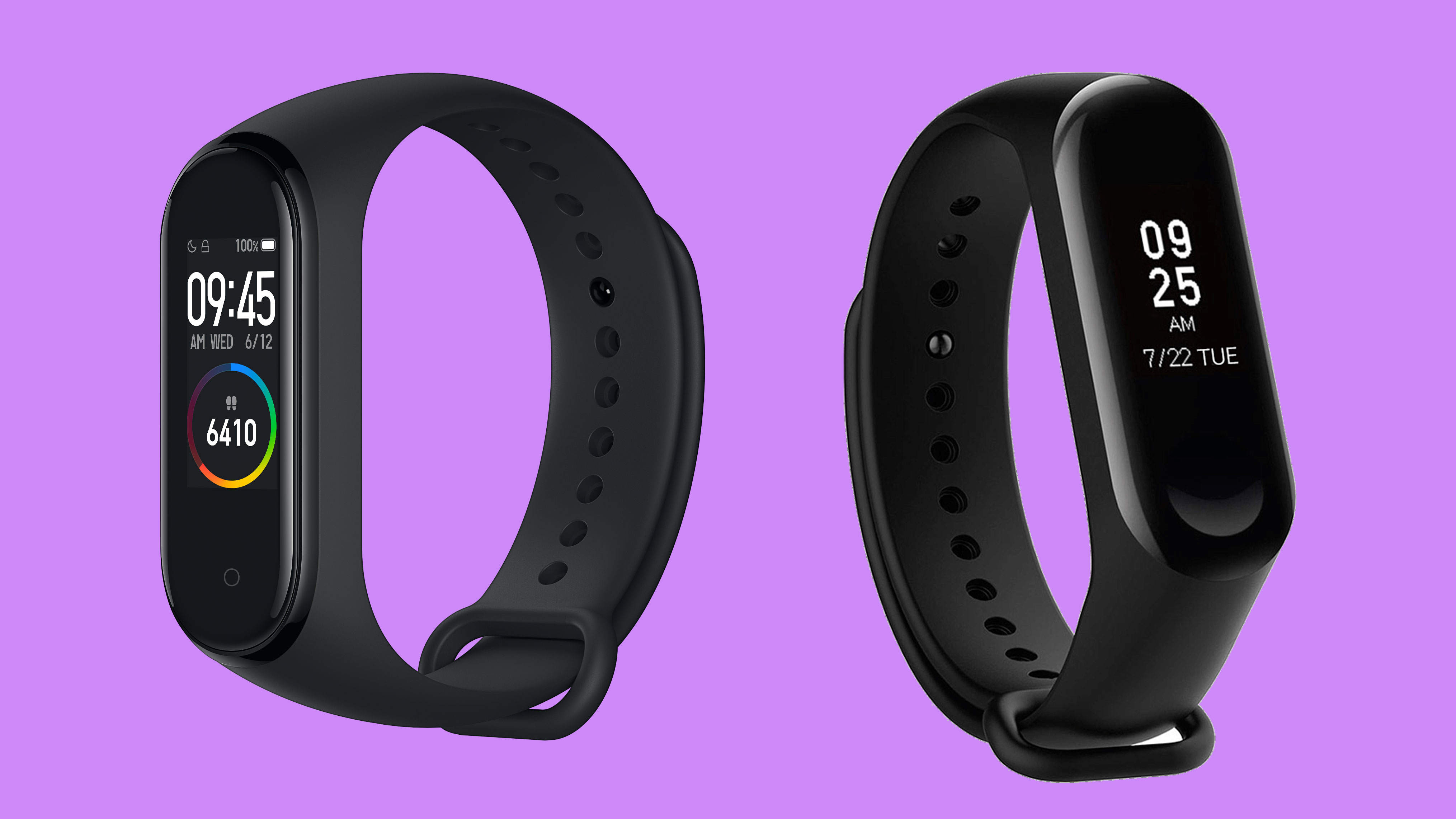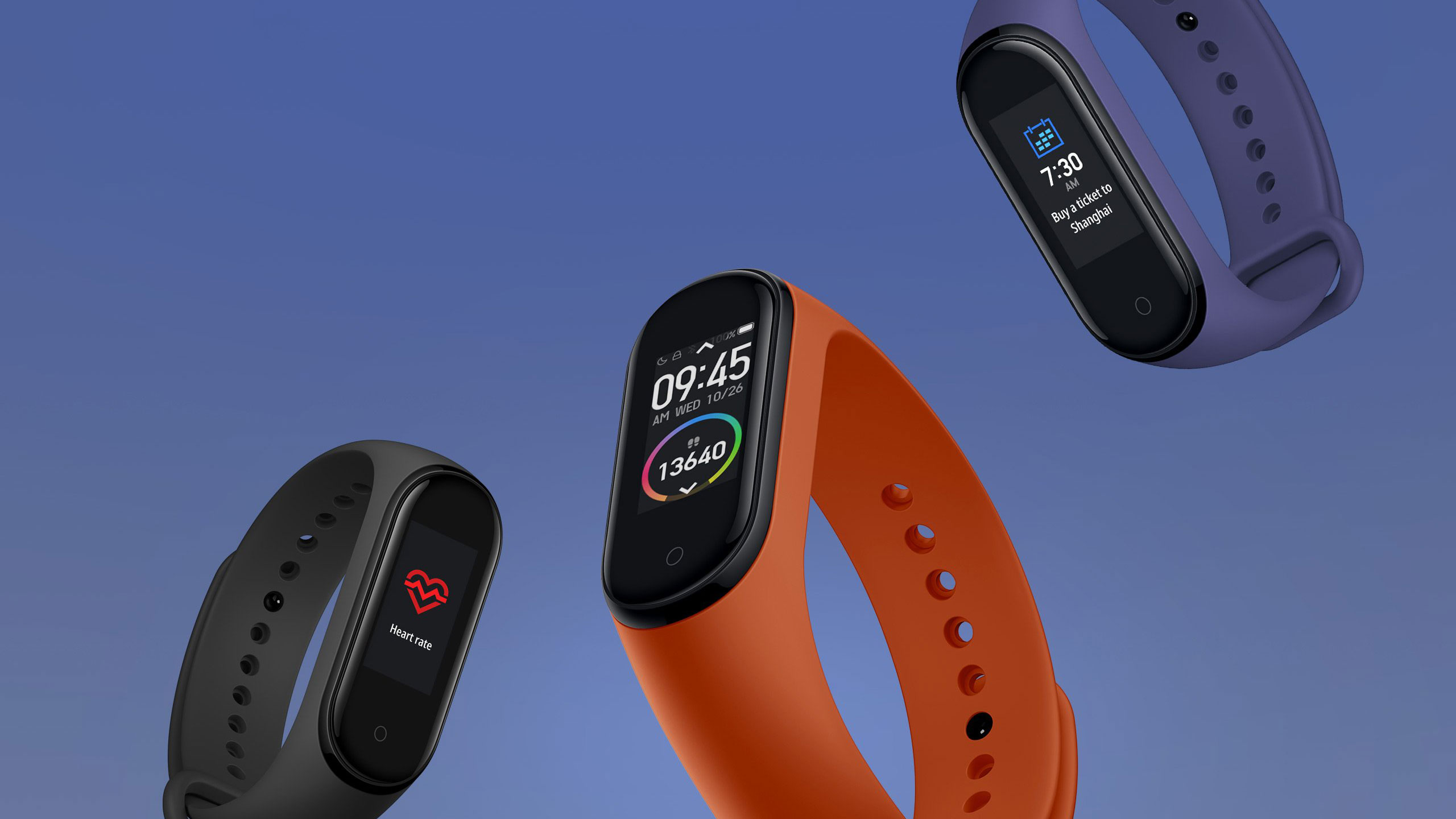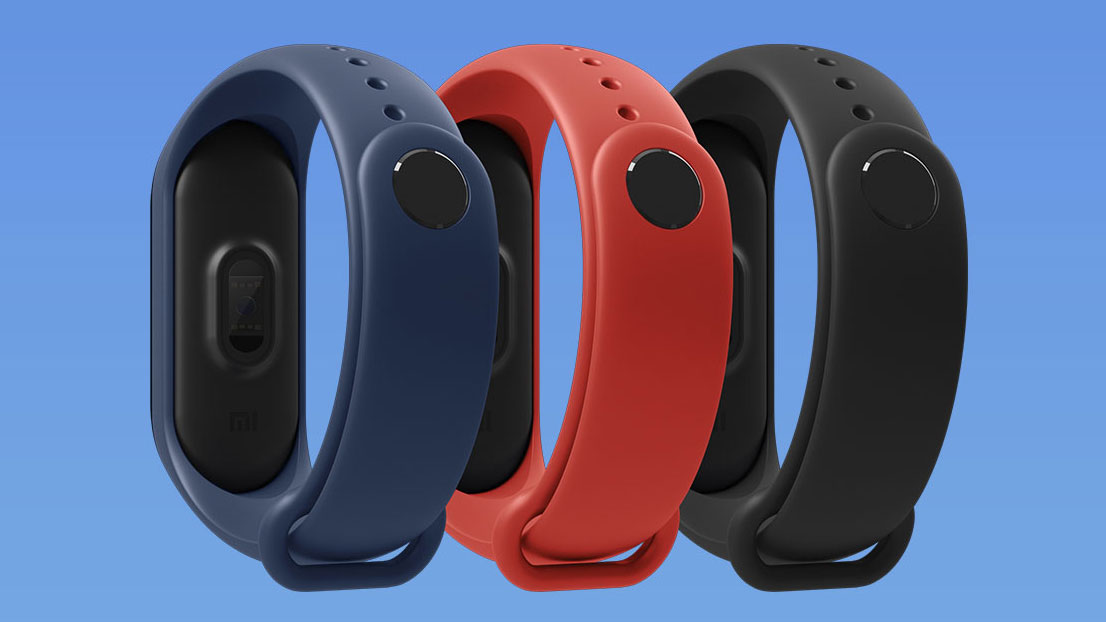Xiaomi Mi Band 4 vs Mi Band 3: which affordable tracker is for you?
Cheap, yet impressive, fitness trackers

Xiaomi just announced a refresh of its best-selling fitness tracker. The last-gen tracker has proven to be one of the most popular fitness bands on the market right now, and it's likely because the price is so low.
It’s hard to find a more affordable and feature-packed device than the Xiaomi Mi Band 3, and that has meant the company has excelled at getting the health tracker onto wrists all around the world.
Despite the Mi Band 3 only being around a year old, Xiaomi has now introduced the Mi Band 4 in China. It has confirmed the Mi Band 4 will be coming to the UK later this year, and we have reason to suspect it may be set for the US and Australia too.
Below we’re going to talk you through all of the new features, so you can see how it compares to the Mi Band 3 and what a major change to the fitness band formula it is for Xiaomi.
Xiaomi Mi Band 4 vs Mi Band 3 display


The display is perhaps the biggest change Xiaomi has made for its upgraded fitness tracker.
Every Mi Band product so far has had a black and white display, but that’s all changed on the Mi Band 4, as it’s the first one with a color screen and it’s also bigger than the Mi Band 3.
The Mi Band 3’s display is 0.78 inches with a resolution of 128 x 80. Again, that’s just black and white so you’ll just get to see your stats in monochrome.
Sign up for breaking news, reviews, opinion, top tech deals, and more.
If you opt for the newer Mi Band 4, you’ll get a slightly bigger display at 0.95 inches and a resolution of 120 x 240 as well as the benefits of a color screen.
That’s likely to be a significant change for your wrist as it allows for a more vivid screen when you're cycling through different features and looking at the clock face. On that note, Xiaomi has included 77 different types of clock face on the Mi Band 4, allowing you to customize its look.
Xiaomi Mi Band 4 vs Mi Band 3 design


Apart from the slightly larger screen on the Mi Band 4, the design is fairly similar. Both products are long, thin bands that sit on your wrist with relatively light weights of 22g for the newest tracker and 20g for the Mi Band 3.
In both cases the fitness tracker itself sits within a silicone band, which can be changed out if you’re looking for a style change. Any of your existing Mi Band 3 straps can be used on the Xiaomi Mi Band 4 too.
In the west, Xiaomi only sold the Mi Band 3 in black, orange and blue. In the marketing materials so far we’ve seen at least five colors for the Mi Band 4 including black, blue, purple, orange and beige.
Maybe we won’t see all of those colors land in the west, but it's likely you'll have at least some extra color options for the newer tracker.
Both products are waterproof up to 50 meters, so you’ll be able to take them swimming, but they're not appropriate for anything more intensive such as diving or being submerged for long periods of time.
On both trackers you'll also find a capacitive button at the bottom of the display to wake the screen and to select certain features.
Xiaomi Mi Band 4 vs Mi Band 3 features
Both fitness trackers come with similar fitness features including step tracking, a heart rate monitor, and a variety of automatic activity tracking modes for exercises such as cycling and running, though neither include GPS.
There’s a new six-axis sensor inside the Mi Band 4 though that allows for more accurate and automatic swim tracking. It can monitor Freestyle, Backstroke, Butterfly Stroke and Medley when you’re in the pool, so that may be a big selling point for you.
It’s worth noting that the fitness features here are relatively limited, but that’s just part and parcel of getting a fitness band that is more affordable than some companies top-end options.
Both trackers are capable of displaying some notifications that you get through from your smartphone, such as incoming calls and instant messages from services like WhatsApp and Messenger.
They're both a little limited in this space though, as for example you won't be able to reply from your wrist.
There are a variety of features on board each tracker such as a weather forecast, an alarm and sleep monitoring.
Both trackers are said to survive for around 20 days of average usage from a single charge. We found that claim to be true on the Mi Band 3, and we hope to see similar performance from the Xiaomi Mi Band 4 when we get to test it.
The Mi Band 4 is also set to support Xiaomi's own voice assistant, but it's unlikely the company will be introducing that feature to countries outside China. The same goes for NFC, which is available on both trackers in China.
Xiaomi Mi Band 4 vs Mi Band 3 price

We only know the price for the Xiaomi Mi Band 4 in the UK, where it's set to cost £34.99 (around $45 / AU$65).
The Mi Band 3 was even cheaper than that at launch with a price of £23 (about $30 / AU$35) but it hasn't dropped down much further since its launch.
Obviously the Mi Band 4 is more expensive then, but it's such a small price difference in the UK that it would take a hefty discount on the Mi Band 3 to make it worthwhile buying the older version.
Takeaway
The Mi Band 4 isn't the most dramatic upgrade to Xiaomi's fitness tracker range, but the price of the two products is so similar that it seems silly to recommend the older Mi Band 3 to most people.
If price is your biggest consideration and you really want to save that £10 or $10 it may be worth getting the Mi Band 3, but the color screen alone is likely to be worth the extra expense for the Mi Band 4. All of this said, we won't know for sure until we get to fully review the Xiaomi Mi Band 4.

James is the Editor-in-Chief at Android Police. Previously, he was Senior Phones Editor for TechRadar, and he has covered smartphones and the mobile space for the best part of a decade bringing you news on all the big announcements from top manufacturers making mobile phones and other portable gadgets. James is often testing out and reviewing the latest and greatest mobile phones, smartwatches, tablets, virtual reality headsets, fitness trackers and more. He once fell over.